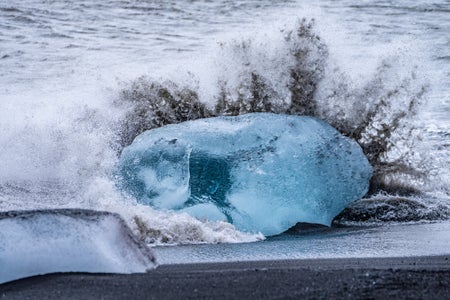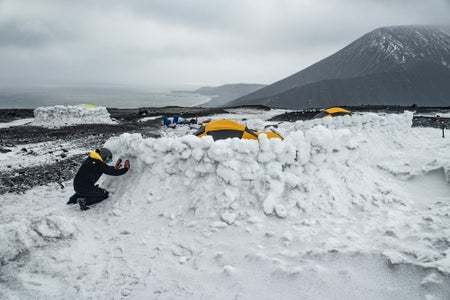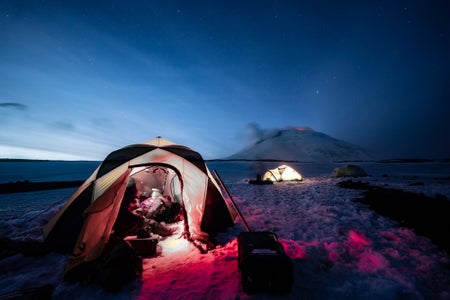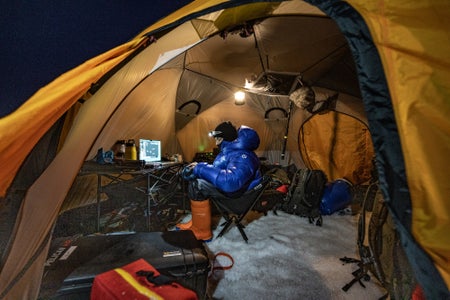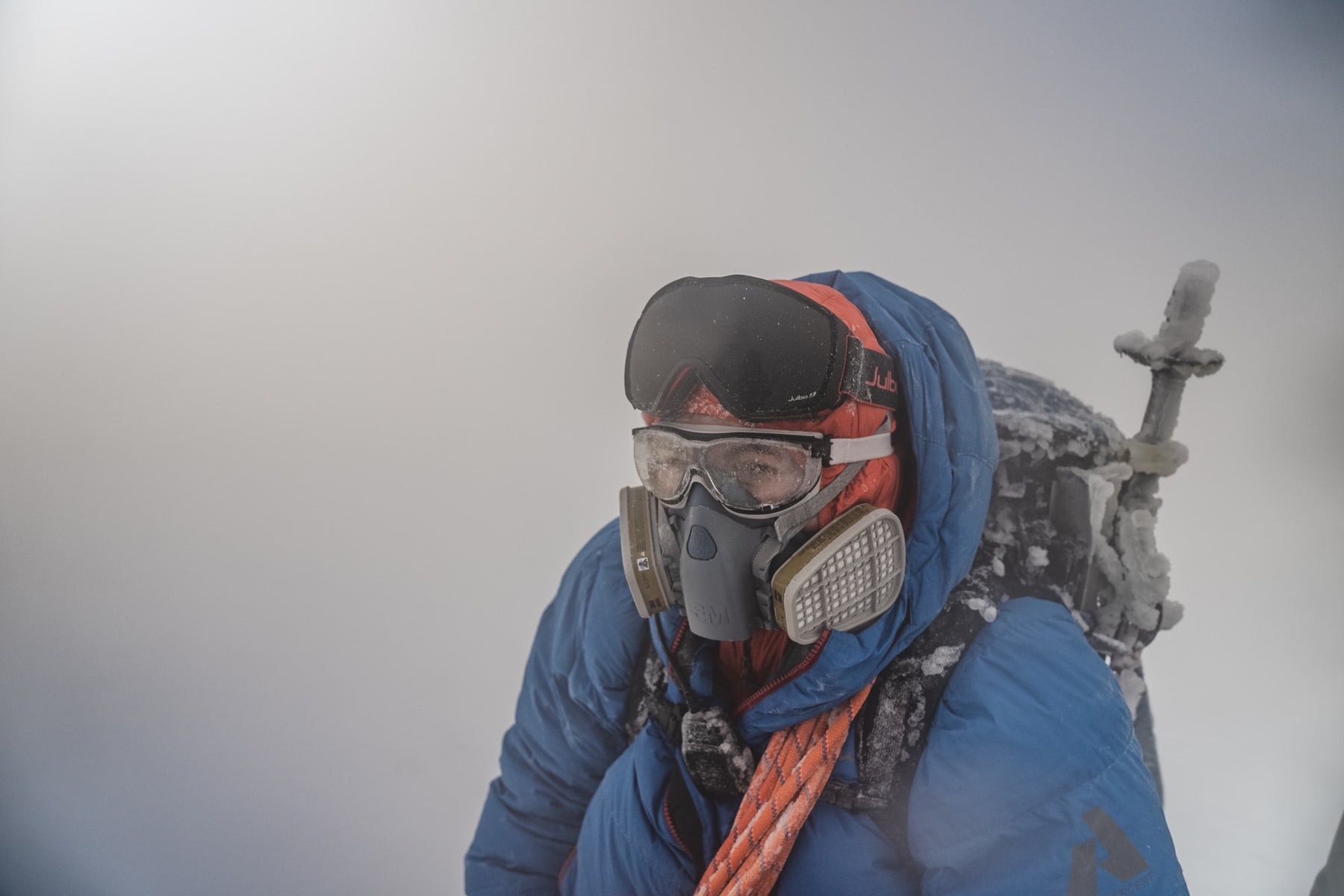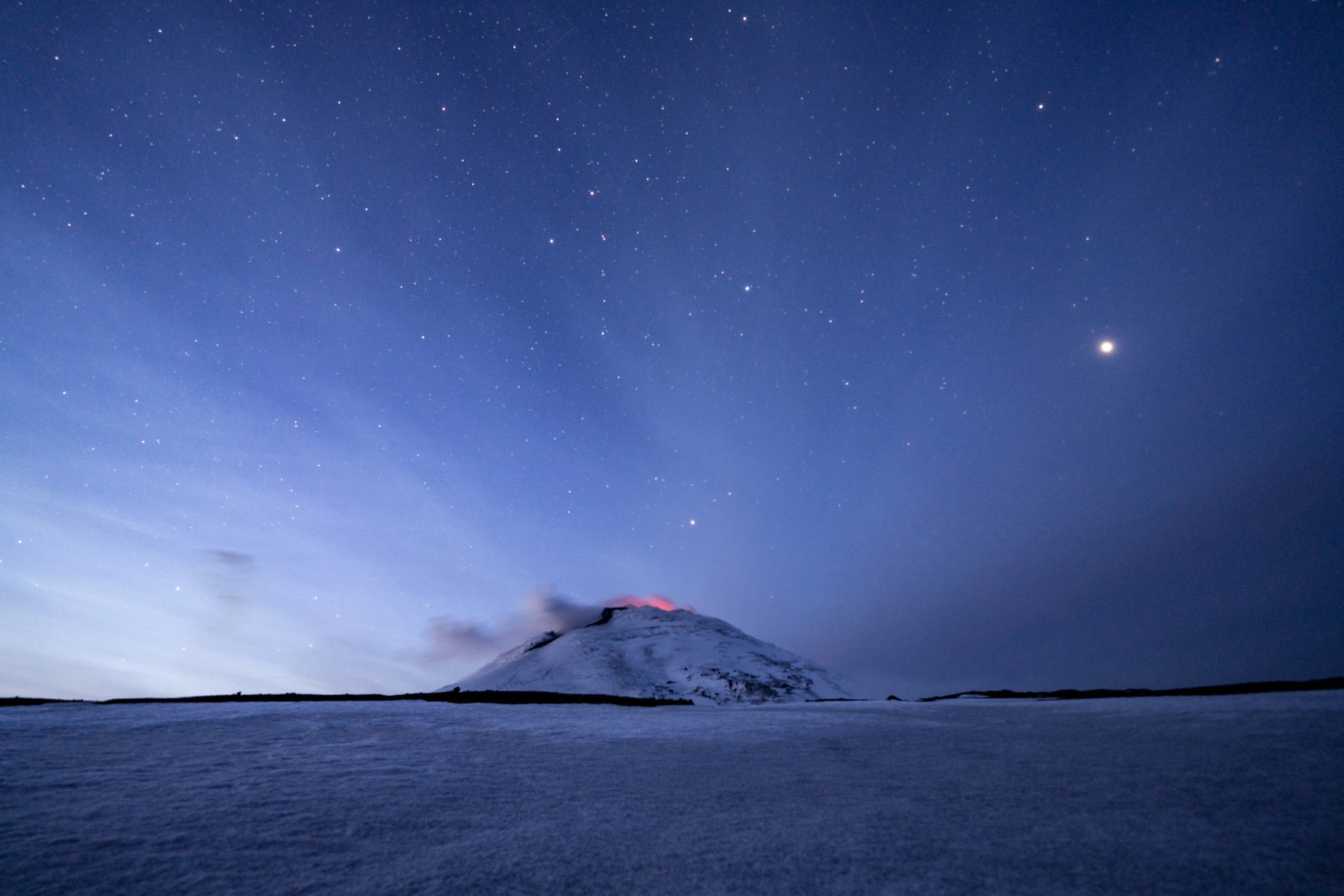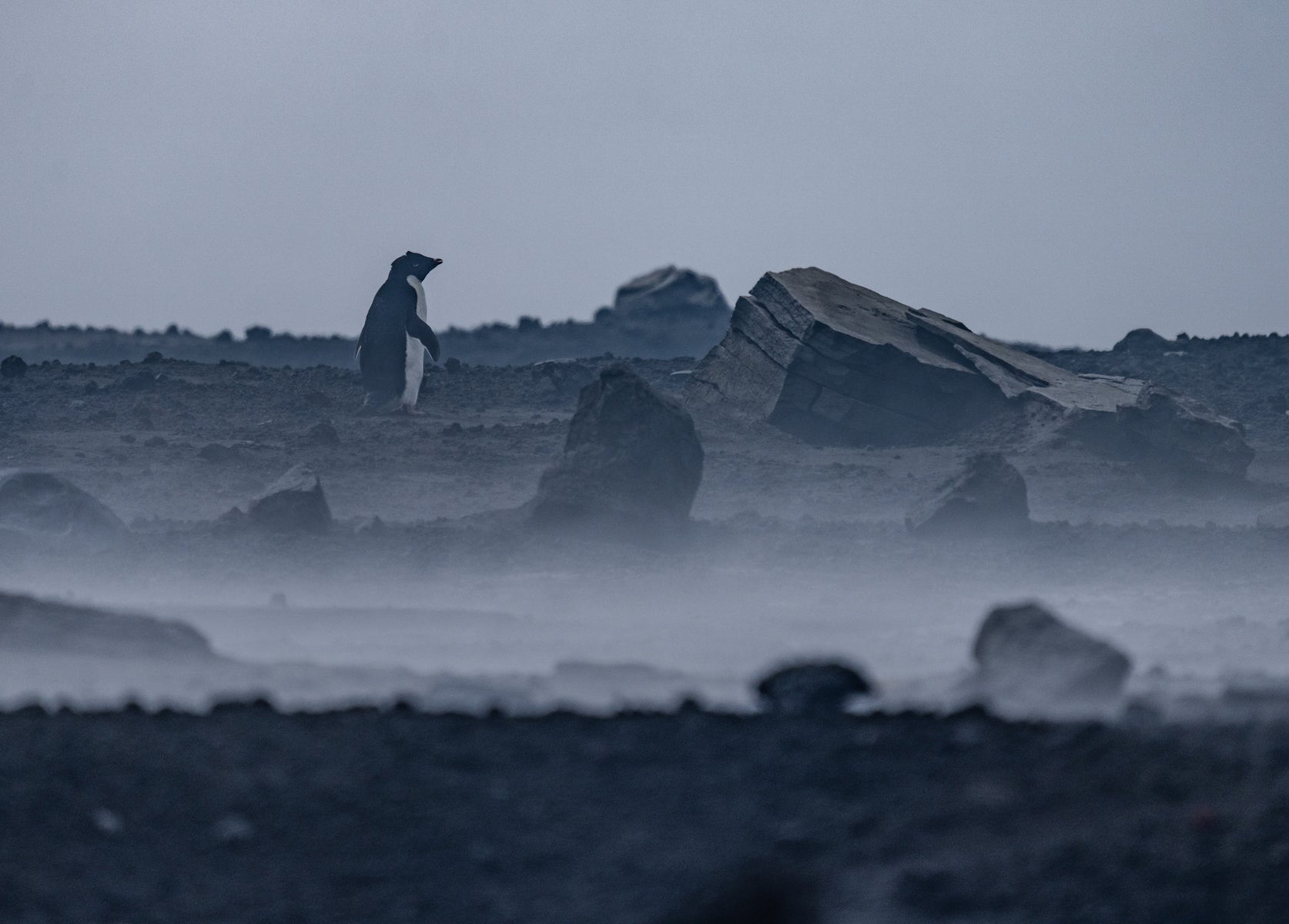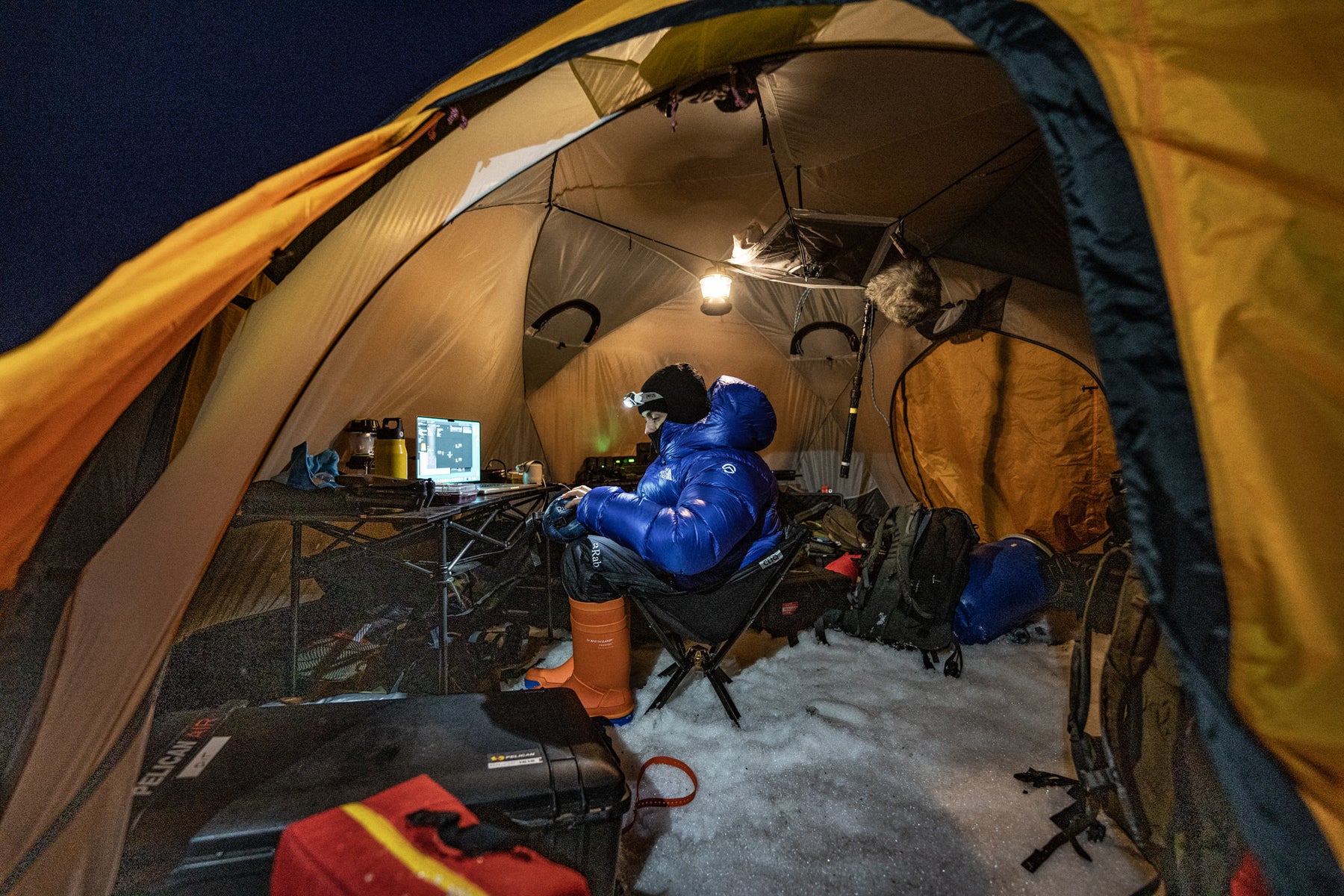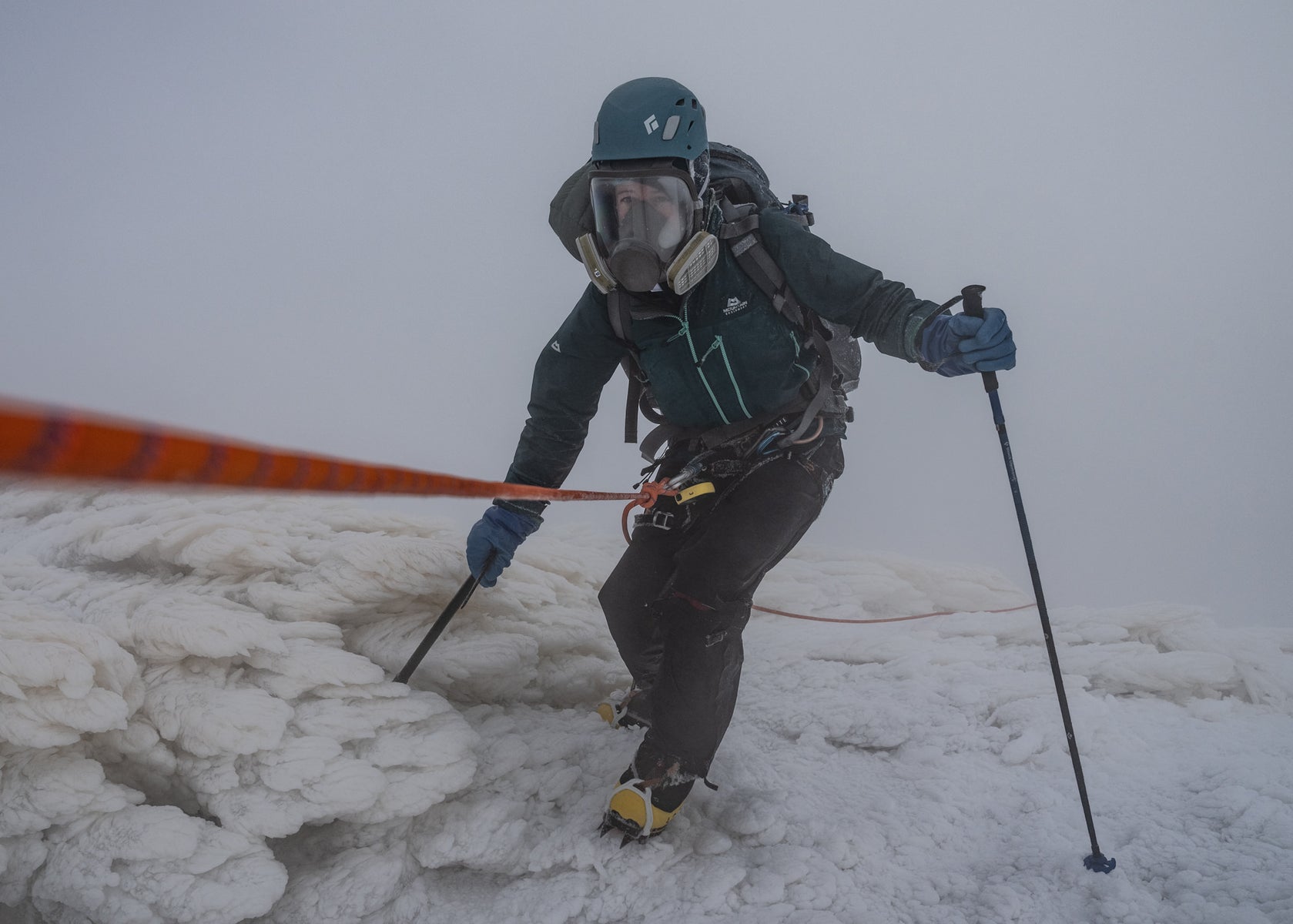For explorer, photographer and filmmaker Renan Ozturk, “true creativity and exploration are deeply connected to earth and those fighting to understand it.” If you’re familiar with the Sony Artisan’s work, you’ve seen how he ventures to some of the hardest-to-reach places on our planet to document the important stories unfolding in front of him. A recent assignment shooting photos for National Geographic and video for Disney+ took him to Mount Michael with a group of volcanologists. The goal for the assignment? To make the first ascent with the team and confirm with their own eyes if there's actually lava inside the crater. We caught up with Ozturk to learn more about the expedition firsthand. Read more and watch the episode of Field Notes: Lava Lake below.
Fighting Through Harsh Conditions To Capture A Story
We’ve spoken to Ozturk before about the balance between survival and storytelling from a prior expedition where he crossed the Northwest Passage, and that theme reappears in this dangerous journey. Mount Michael is located on Saunders Island in the South Sandwich Islands, and as seen in the episode, getting there is no walk in the park. The captain even calls the Drake Passage, known as one of the most dangerous pieces of water on the planet, a teddy bear’s picnic compared to the South Sandwich.
“First of all, you're sailing through the worst seas, the worst of the worst seas on Earth,” explains Ozturk. “We needed to shoot some of that sailing to document how hard it was for these volcanologists to get to this island. Water is one thing on the camera, but water with that kind of salt content is another thing.”
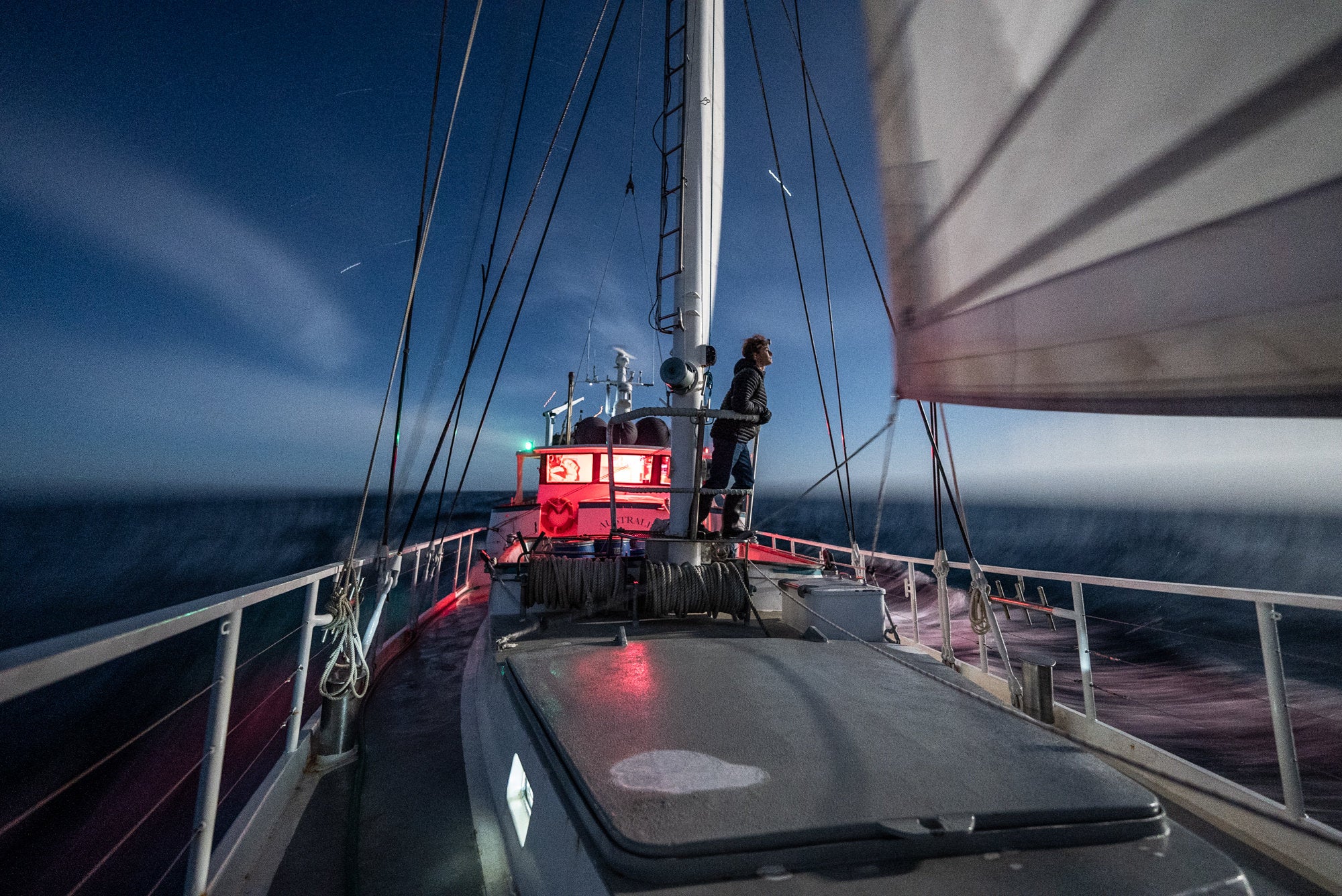
Photo by Renan Ozturk. Sony Alpha 7S III. Sony 14mm f/1.8 G Master. 1/3-sec. f/1.8, ISO 6400
If you thought getting to the island was the hard part, it’s just part one of the dangerous and difficult mission. Once they were actually on the island, they experience harsh conditions and a host of other challenges. Ozturk shares, “You don't realize it, but these are way harder conditions than Everest or anything because you're right on the freezing point and there are super high winds. There is no staying ‘high and dry’ like you can in really cold environments in the Himalayas, because here you’re right at sea level and right at the freezing point. Ice just starts caking on you and your gear, so you have to be really careful and limit how much you bring it out. Something like an underwater housing would fog up, and you’re also not going to climb a mountain with a 10-pound underwater housing.”
He continues, “We also couldn't drink the water because the snow was right in line with the sulfuric plume of the volcano. It was kind of the same thing for camera gear and the scientists had warned us that it’s possible our cameras and any electronics wouldn’t work up there. It was really difficult, especially on the climbing portion. It was hard to survive on the island, let alone film, so we were lucky to shoot anything to show what these volcanologists are all about.”
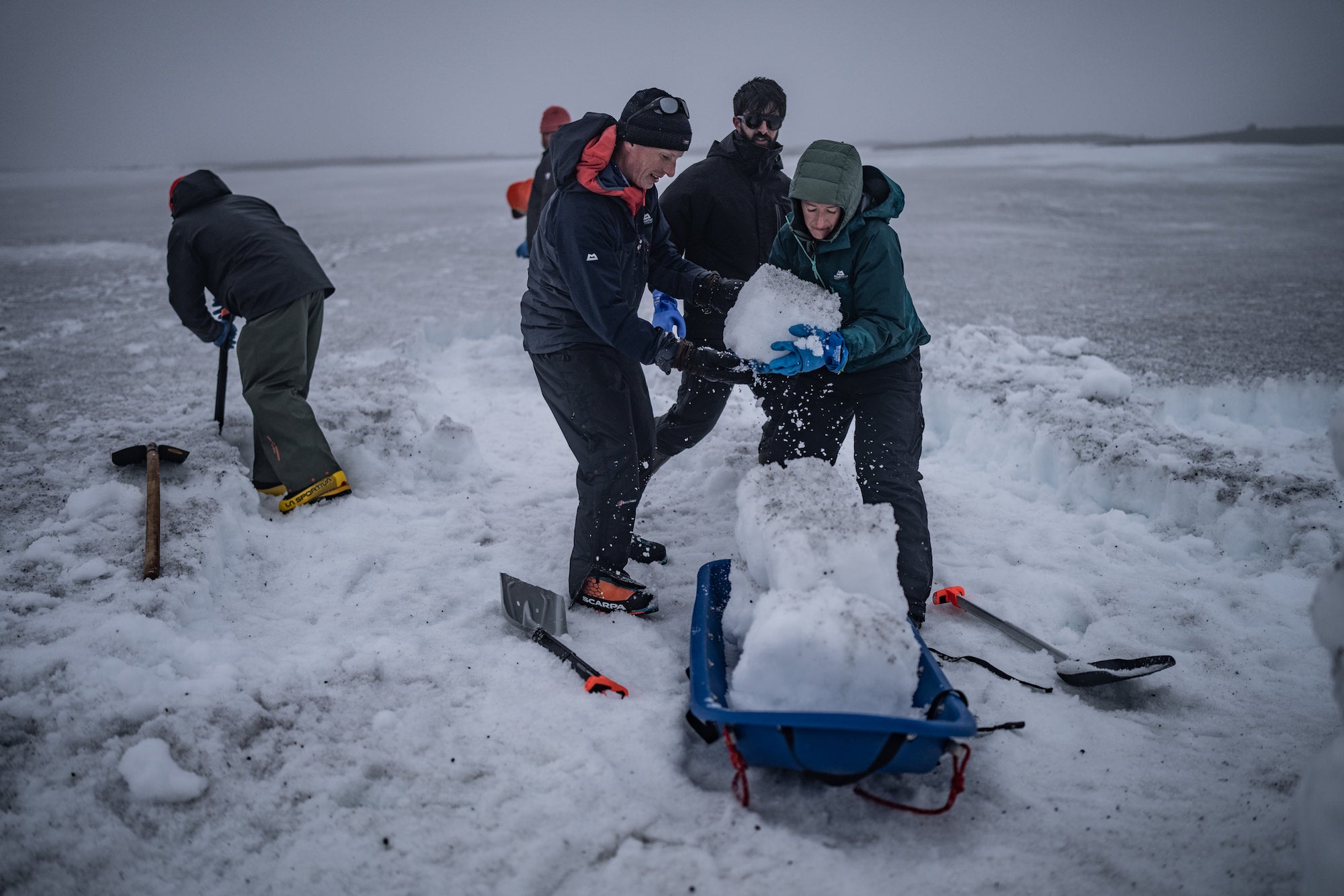
Photo by Renan Ozturk. Sony Alpha 1. Sony 35mm f/1.4 G Master. 1/2500-sec. f/1.4, ISO 125
"One Usable Image Every Single Day"
Even with all of the dangerous conditions Ozturk faces with the volcanologists, he still has a goal to capture at least one usable image every day. This objective stems from the high bar set by National Geographic Magazine, and Ozturk explains that it requires staying curious, aware, motivated and working tirelessly to capture an image worthy of publication that details the expedition's events and contributes to the overall narrative arc. “You have to work enough each day to try to come away with one publishable image that you're proud of and keep working toward that, rather than being complacent and just saying, ‘Oh, the weather is bad,’ or any other excuse, which is an easy thing to do on these expeditions that are months-long.”
As you can see, during these trips, there’s always a lot going on. Ozturk says there’s a bit of time distortion because you’re dealing with so much stuff that some days are over in the blink of an eye. This requires you to really work hard to ensure you’re hitting the mark. And that’s not just for the photos he’s getting for National Geographic, he explains it also goes for the documentary and video side. “Everyone might be under the deck seasick and no one wants to pull out a camera, but if you pull out a camera for two minutes, those are the shots that end up really making the story.”
Throughout the journey Ozturk uses his Sony Alpha 1 camera to capture everything he needs to deliver a full-on streaming documentary as well as the stills assignment. He also has the Sony Alpha 7S III and Sony Alpha 7R IV for backup. As for lenses, he relies on a series of sharp G Master primes like the Sony 35mm f/1.4 G Master and Sony 14mm f/1.8 G Master, plus zooms like the Sony 24-70mm f/2.8 G Master II, Sony 100-400mm f/4.5-5.6 G Master and Sony 200-600mm f/5.6-6.3 G for longer shots.
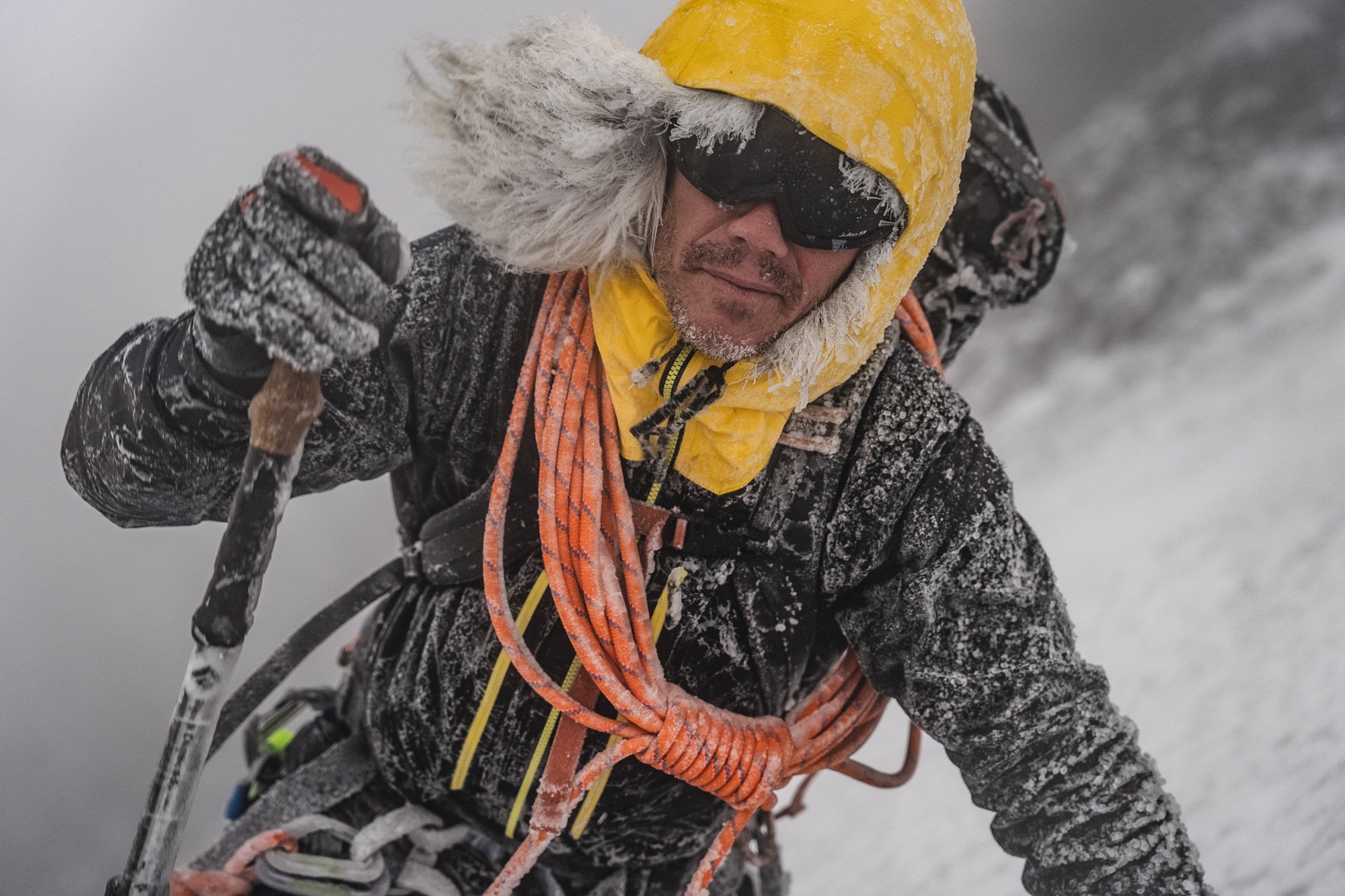
Photo by Renan Ozturk. Sony Alpha 7S III. Sony 24-70mm f/2.8 G Master II. 1/640-sec. f/3.2, ISO 200
While an exorbitant amount of planning goes into a mission like this, there’s really only one thing the team knows for sure, and that’s to expect the unexpected. Ozturk goes into the mission with this in mind to remain flexible and adaptive to maintain the integrity of the story while successfully documenting each significant event during the journey.
"Although you have insane storyboards and these things we call beat cheats for the documentary, where everything is planned out to a tee of what possible storylines are, those things always shift," he explains. "You're exchanging one story beat for another, knowing the twists and turns you need for a complete video story, a beginning, middle, and end. It's interesting how the stills and the motion help each other. One way or another, you're just trying to tell a story with these tools, and you need depth to that and you need a narrative arc. And if one thing happens to the narrative arc that you have in your mind, then you quickly have to refill that with something else and be pivoting constantly.”

Photo by Renan Ozturk. Sony Alpha 1. Sony 24-70mm f/2.8 G Master II. 1/400-sec. f/3.5, ISO 500
Where True Creativity & Exploration Starts
As Ozturk states in the video, the mindset of the expedition, and really all of his documentary work, is hinged on the profound belief that, "true creativity and exploration are deeply connected to earth and those fighting to understand it." What exactly does he mean by this? While he is documenting the work of the scientists, he doesn’t want us to miss the first layer of creators in the story, and that is the scientists themselves.
“I have a lot of respect for these scientists,” he explains. “While the photographers and directors are the ones who often share the stories and are recognized for them, the scientists and the conservationists are the true creators in these stories. They’re just so deeply entrenched in their work, they don’t often share it in the same way.”
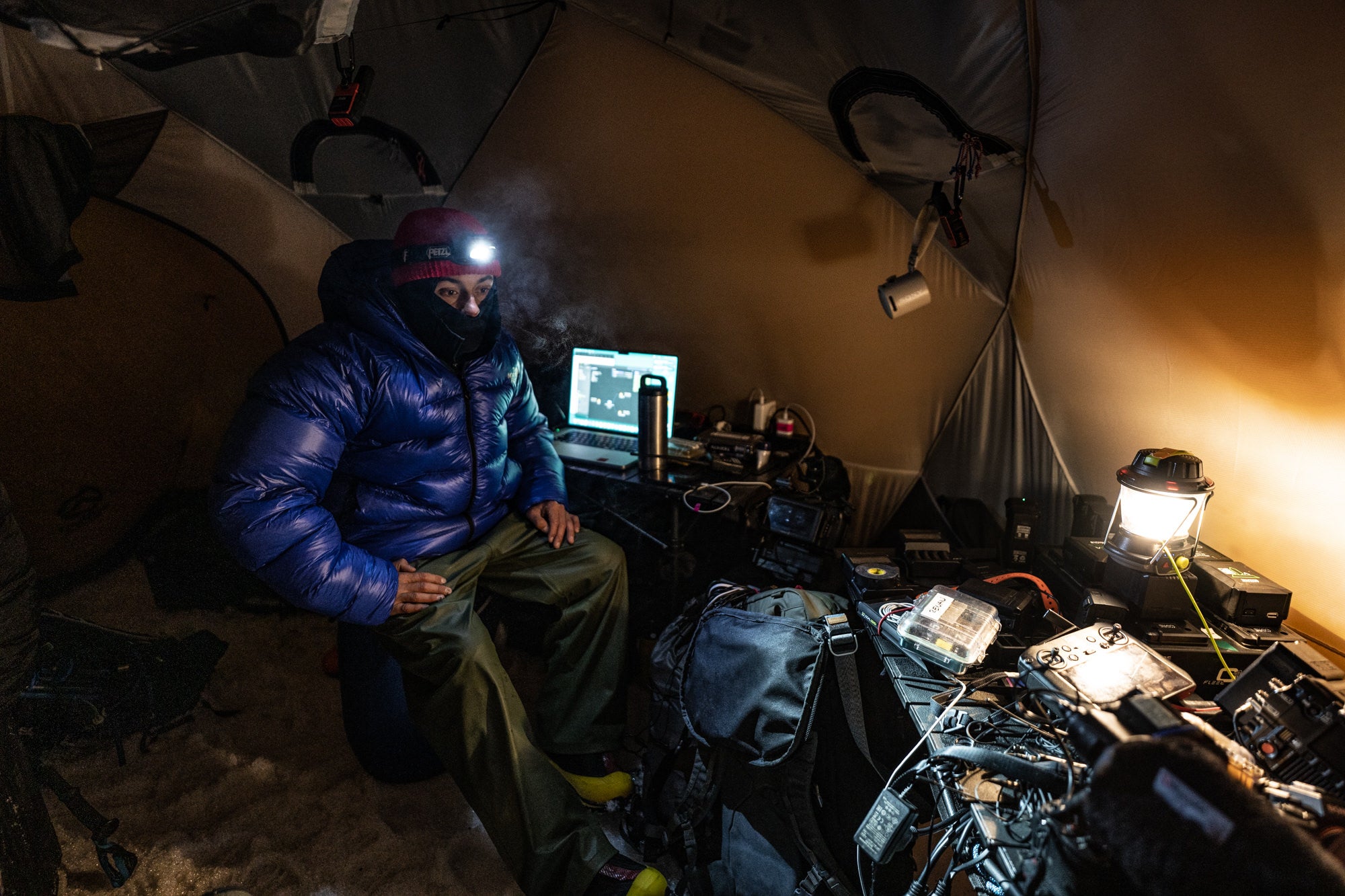
Photo by Renan Ozturk. Sony Alpha 1. Sony 20mm f/1.8 G. 1/100-sec. f/1.8, ISO 1000
He continues, “They're really the ones that are on the creative edge of making the world a better place or protecting places that exist. And the technology the volcanologists were creating to gather data – it’s an incredibly creative and technical thing they’re doing. There is a whole arena of creativity that people don’t really realize that goes into those science and conservation professions. Scientists are using Sony cameras for various reasons in their work. I think the worlds are blending together more and more. Our job is to amplify these stories and help tell them so they can get more funding and increase their work.”
To stay within this mindset, Ozturk underlines the point that creativity often needs a purpose or a meaning first. For young storytellers who are asking how to find their story, he says many times the purpose needs to come before you even touch a camera. He suggests focusing on finding your passion or a purpose first, and then using your gear to support capturing it.
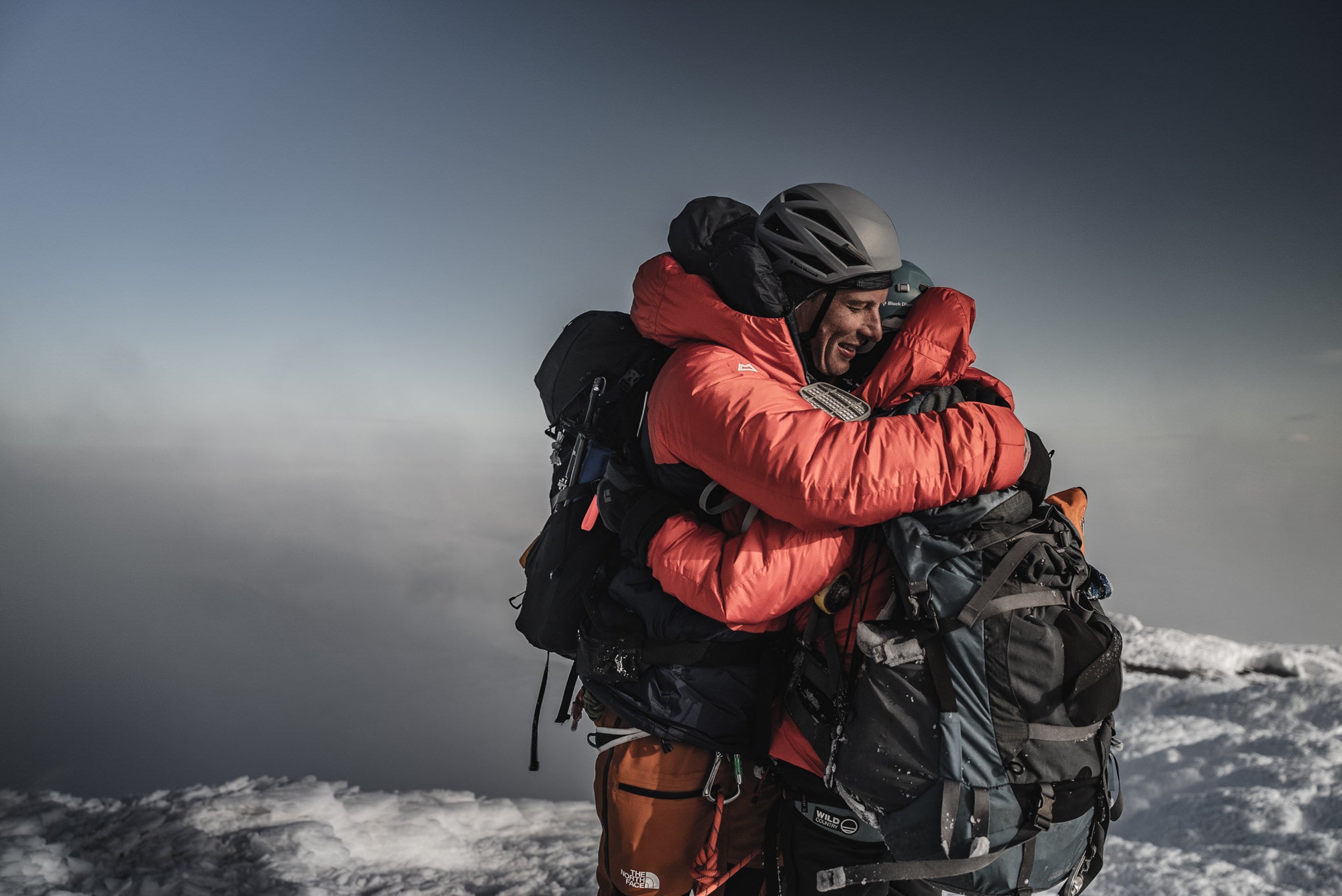
Photo by Renan Ozturk. Sony Alpha 7S III. Sony 24-70mm f/2.8 G Master II. 1/320-sec. f/2.8, ISO 200
“Sometimes purpose needs to proceed blind documentation. Finding a purpose to your story will drive you to do incredible things with image-making. It's good to slow down and really find that purpose before diving in and burning terabytes of data when you don't know why.”
Watch the Disney+ documentary, "Lake of Fire," HERE.
Subscribers to National Geographic, read the article and see the photos HERE.
See more videos like this one on the Alpha Universe YouTube Channel.



